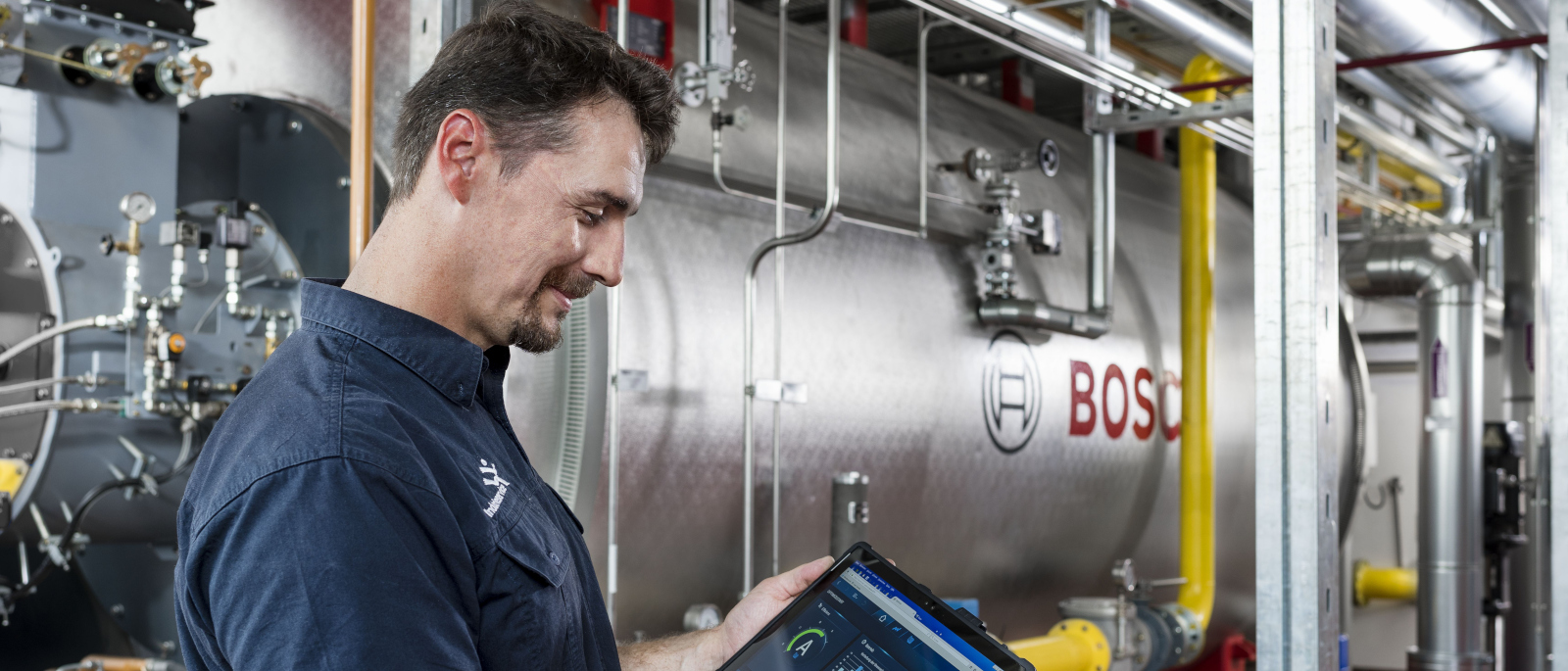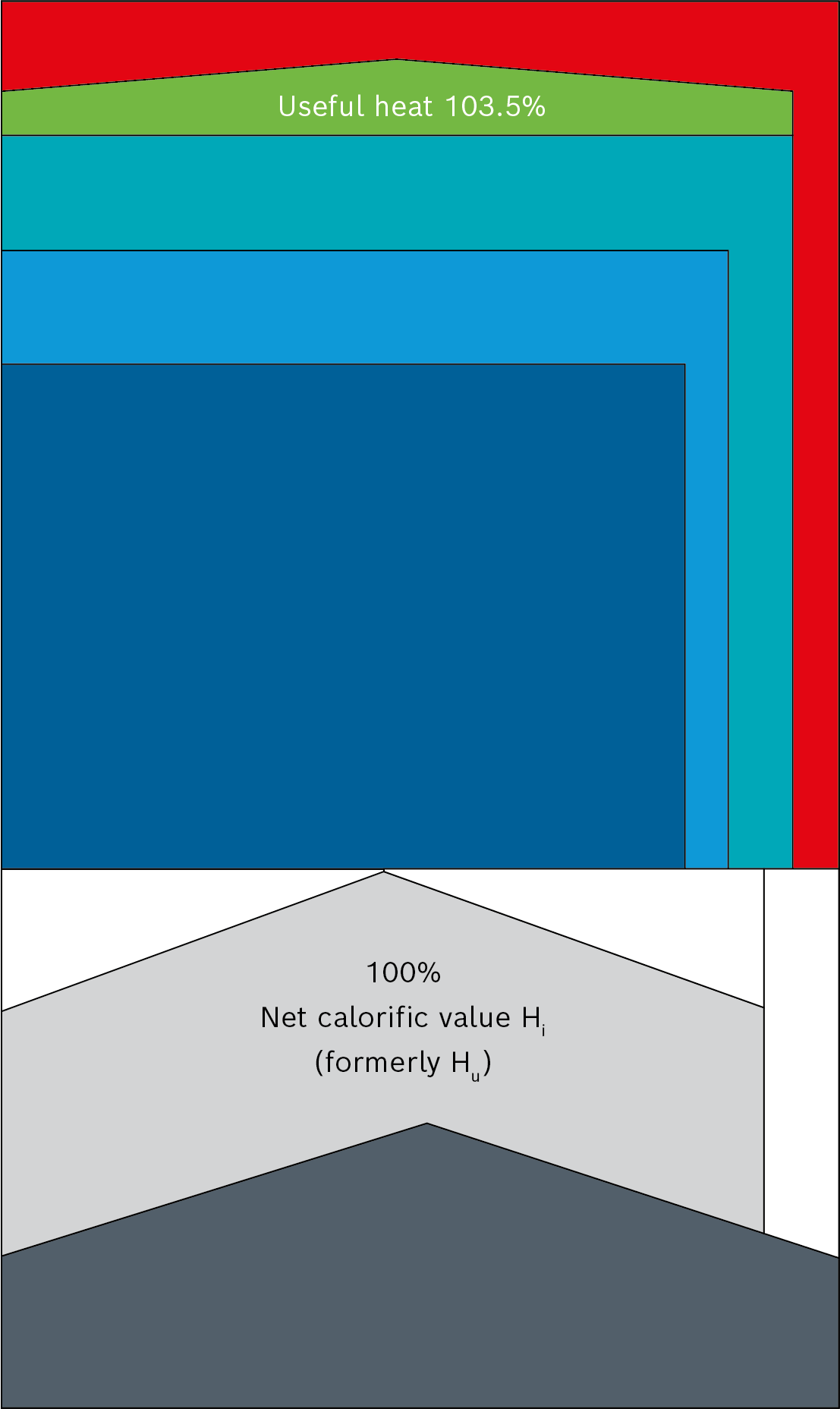
Basics
Fuel costs represent the major share of the operating costs of a boiler system. The efficiency and also especially the actual degree of utilisation is relevant for assessing the energetic effectiveness of steam boiler systems.
In addition to the fuel costs, the cost of power, chemicals, water and waste water, spare parts and downtimes must be monitored and optimised.
Net calorific value, gross calorific value and condensation heat
The net calorific value (Hu or Hi) is the energy released during a full combustion when the flue gas is cooled back to the reference temperature at a constant pressure. In this case the water vapour produced during combustion remains in gaseous form. The net calorific value therefore only specifies the quantity of sensible heat in the flue gases and is directly related to temperature, and not the quantity of condensation heat bound in the water vapour.
The gross calorific value (Ho or Hs) is the energy released during a complete combustion when the flue gas is cooled back to the reference temperature at a constant pressure and the entire quantity of water produced is condensed. The gross calorific value therefore also contains the condensation heat, also referred to as “latent heat”.
Depending on the fuel used, the gross calorific value is around 6.8% (fuel oil) to 10.8% (natural gas H) higher than the net calorific value.
|
Material value |
Symbol |
Unit |
Natural gas |
Natural gas |
Propane |
Butane |
Fuel oil |
Fuel oil EL |
|
Net calorific value |
Hi |
kWh/m³ |
8.83 |
10.35 |
25.89 |
34.39 |
11.89 |
11.89 |
|
Gross calorific value |
HS |
kWh/m³ |
9.78 |
11.46 |
28.12 |
37.23 |
12.70 |
12.70 |
|
Ratio |
Hi / HS |
% |
110.8 |
110.7 |
108.6 |
108.3 |
106.8 |
106.8 |
|
Dew point |
tCo |
°C |
56.9 |
57.0 |
53.1 |
52.4 |
48.6 |
48.6 |
|
Acid dew point |
tCo |
°C |
– |
– |
– |
– |
124 |
97 |
|
Water generation1) |
Wspec,H2O |
gH2O/kWh |
159.4 |
158.5 |
126.9 |
122.0 |
100.5 |
100.5 |
|
pH value |
pH |
– |
2.8 – 4.9 |
2.8 – 4.9 |
2.8 – 4.9 |
2.8 – 4.9 |
1.8 – 3.7 |
2.3 – 4.5 |
1) With reference to Hi
Some of the water vapour in the flue gas can be condensed due to state-of-the-art heat recovery and flue gas systems made of corrosion resistant materials (e.g. suitable stainless steels). Using this condensing technology, the efficiency can then also increase to over 100% because it is based on the lower net calorific value.
Info on Condensing heat exchanger
Efficiency is calculated on the basis of the net calorific value of a fuel as in former times it was essential that the water vapour in the flue gas remained in gaseous form to prevent flue gas condensation and corrosion of the boiler or flue gas system as well as chimney sooting.
However, to use the condensing technology sensibly, the medium must be at a temperature of ≥ 10K below the flue gas dew point temperature, i.e. at a maximum temperature of 45°C with natural gas.

Heat balance of a steam generator featuring condensing technology and gas combustion (values are examples)